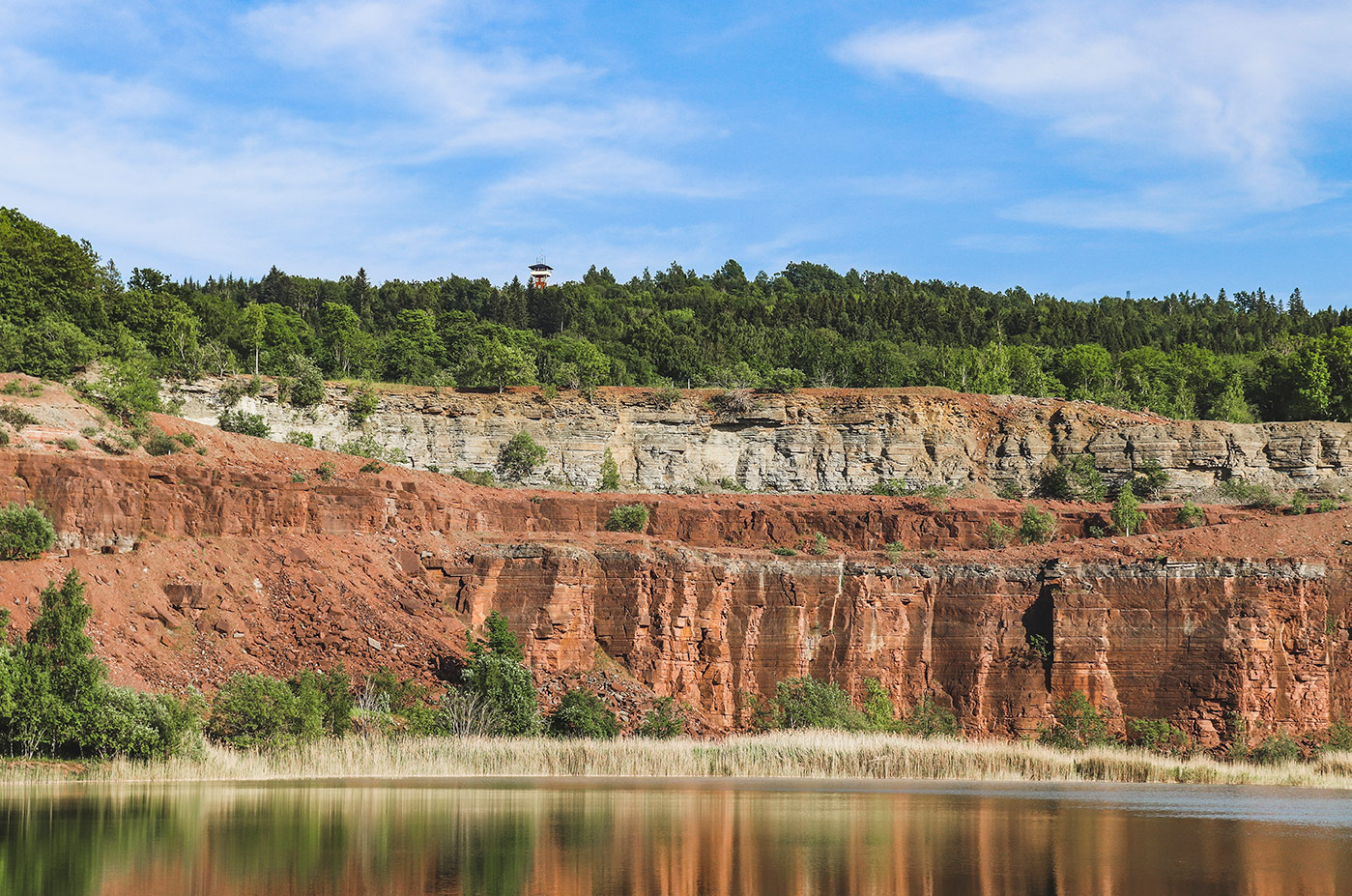
The lower layers of limestone were laid down 400 million years ago, and the shifting colours of the rock and the beautiful setting have made this quarry one of the most popular places to visit on Kinnekulle.
In the quarry you can see a full 40 metres of Kinnekulle’s impressive limestone strata, consisting of Middle Ordovician limestone. In the rock you can see the fossils (petrified remains) of cephalopods and crustaceans that lived in the sea 400 million years ago, when the rock was formed. The limestone was laid down over a period of around 50 million years (1 mm for every 1000 years). It forms distinct layers with different colours at different levels, including grey, green-grey and reddish brown. These layers vary in quality and have been used for different purposes. The lower layers of the limestone were quarried for making cement and burned to produce lime. The remaining layers were mainly processed to make a variety of building materials.
Most of the limestone from the quarry was used to manufacture cement between the years 1882 and 1979. A total of around 25 million tons of limestone were quarried. As cement production dwindled and the quarry site was restored it became clear there was a risk that the groundwater supply to the Munkängarna nature reserve below would be cut off. To prevent this, a pond was created in the base of the quarry to supply the meadows with water. This pond has been stocked with rainbow trout. A fishing permit can be bought from the tourist office in Lidköping and from other outlets.



